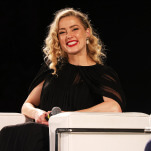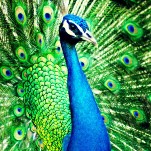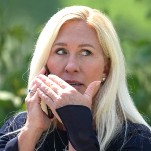Why Big Little Lies Is a Jane Austen Fan's Modern-Day Dream
EntertainmentThe most poignant image of a woman on TV in recent memory is none other than Reese Witherspoon driving along the Northern California coast, her bright blue eyes—a little tired around the edges—reflected back in the rear view mirror of her car. This motif, repeated frequently in the HBO limited series Big Little Lies, says everything about the exhaustion—the passion, and the sublimation of 21st century womanhood in a way that has not yet existed on the small screen.
The series finale, which has left the world in a collective daze since its Sunday night airing, was satisfying in the way TV shows rarely are. The audience was blessed with answers to the questions the series proposed in its first episode: who killed/was biting whom? The straightforward gratification of this conclusion only points to the fact that the real takeaway of Big Little Lies is meant to be emotional, not physical. While the Monterey sheen and Feminine Mystique/Lana Del Rey sad girl fantasy is very present and accounted for, the show goes deeper into exposing the classless struggle of compartmentalization and internalization that women in general—and mothers, in particular—are forced into.
Far, far away from Monterey is the English city of Bath—the birthplace of Western literature megastar Jane Austen. Though it seems fair to say Austen never drank a soy iced-chai latte or maneuvered a Buick down the Pacific Coast Highway, her works evoke the same sense of bottled-up passion that creates suspense on Big Little Lies. In both the HBO drama and Austen’s novels, there are fleeting glances, dark halls, secrets and the fervent discussion of the secrets themselves, explicit public and private personas, societal goals, and interfamily drama.
-

-

-

-

-

-

-

-

-

-

-

-

-

-

-

-

-

-

-

-

-

-

-

-

-

-

-

-

-

-

-

-

-

-

-

-

-

-

-

-








































